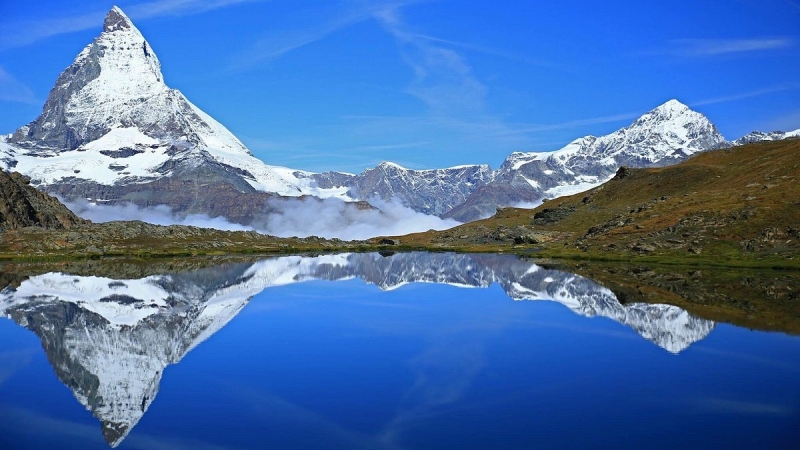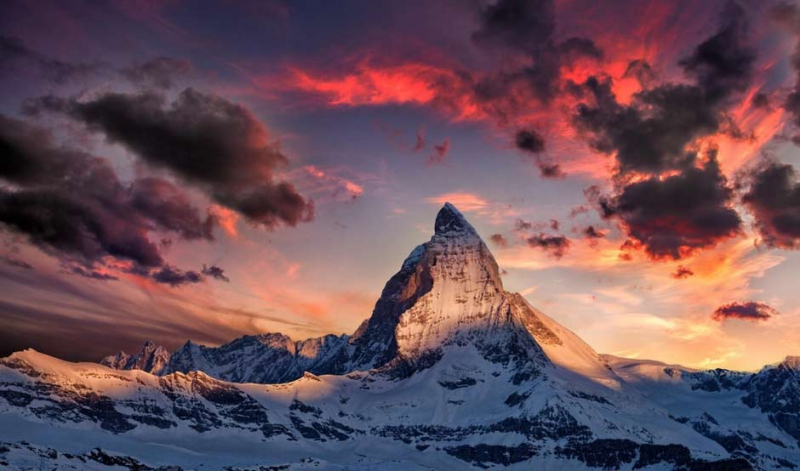Matterhorn
The Matterhorn is an Alps mountain that straddles Switzerland's and Italy's primary watershed and border. It is a massive, nearly-symmetric pyramidal peak in the extended Monte Rosa area of the Pennine Alps, with a top elevation of 4,478 meters (14,692 feet), making it one of Europe's highest summits. The Hörnli, Furggen, Leone/Lion, and Zmutt ridges divide the four steep sides that rise above the surrounding glaciers and face the four compass points. To the north, the summit offers views of the Swiss town of Zermatt in the canton of Valais, and to the south, the Italian town of Breuil-Cervinia in the Aosta Valley. Theodul Pass, located just east of the Matterhorn, is the principal path between the two valleys on the Matterhorn's north and south flanks, and has been a trading route since the Roman Era.
The Matterhorn mountain is made up primarily of two different layers of rock placed diagonally on top of one other. It has a section of its south face that is partially on Italian land. The neighboring grassy valley, known as the "matte," is most likely the source of the Matterhorn's name. The four ridges can be used to reach the summit, with the route across the northeast ridge, also known as Hörnligrat, being the most popular. Climbing the Matterhorn is always dangerous. There have been nearly 500 tragic accidents since the first ascent in 1865. Many climbers misjudge the dangers, particularly on the descent.
Elevation: 4,478 m
LocationAosta: Valais, Switzerland
Parent peak: Weisshorn













